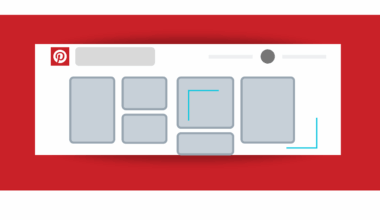Strategies for Pricing New Feature Releases in SaaS Products
Pricing new feature releases in SaaS products requires a thoughtful approach to ensure that customers perceive value while sustaining revenue growth. When considering a pricing strategy, it is essential to analyze the target market’s needs and behaviors. Begin by collecting data on customer usage patterns, preferences, and willingness to pay for additional features. Conduct surveys or gather feedback from your existing user base. Furthermore, competitive analysis is critical, as understanding pricing models used by competitors can provide valuable insights. Ultimately, your pricing strategy should align with the unique value proposition of your new feature releases while remaining flexible to changing market dynamics. Establish a clear framework for evaluating the impact of pricing changes on customer retention and acquisition. Furthermore, consider creating tiered pricing structures that allow users to choose the package that best meets their needs. Remember that effective communication of the benefits of new features is paramount. Highlight how these upgrades will enhance the user experience and solve specific pain points. In summary, striking a balance between profitability and customer satisfaction is key to a successful pricing strategy.
Tiered Pricing Models
Implementing tiered pricing models can be an effective strategy for releasing new features in SaaS businesses. These models allow you to segment your customer base by offering different levels of service that cater to varying needs and budgets. By creating multiple tiers, you can highlight key features that are exclusive to higher-priced packages, thus encouraging upgrades. For instance, basic plans can include core functionalities, while premium tiers might offer advanced analytics, additional integrations, or personalized support. This not only enhances perceived value for higher-tier plans but also prevents alienating users who may not be ready to commit to a more expensive option. Furthermore, tiered pricing can facilitate upselling opportunities, allowing your team to identify customers who might benefit from additional features. It’s also essential to clearly communicate the benefits and inclusions of each tier. Visualization through comparison charts can help customers quickly grasp what they’ll receive by choosing a particular plan. When combined with promotional strategies, tiered pricing can increase both customer satisfaction and overall revenue, creating a win-win for both the business and its users.
Another effective approach for pricing new features is value-based pricing. This strategy focuses on setting prices based on the perceived value of the feature to the customer rather than the cost of development. Begin by identifying the unique value proposition of the new feature and how it meets the needs of your users. Conduct market research to determine how much customers are willing to pay for added functionalities. Implement user interviews, surveys, or A/B testing to gauge reactions to different pricing models. It’s important to communicate the reasoning behind your pricing strategy through detailed marketing messages that highlight benefits like increased efficiency or cost savings the feature brings. Effective positioning is crucial; ensure messaging resonates with your target audience using clear, jargon-free language. Leveraging case studies or testimonials can reinforce perceived value. Moreover, it’s beneficial to analyze product usage patterns to identify which features are most valuable to users. Value-based pricing not only aligns your pricing with customer expectations but also helps maximize revenue potential as features are introduced over time. Ultimately, this approach fosters loyalty by aligning your company’s success with your customers’ satisfaction.
Bundling is another interesting pricing strategy that can enhance the release of new features in SaaS businesses. By combining existing features with newly introduced functionalities, you create a comprehensive package that offers greater perceived value. This strategy can make the overall offering more enticing while increasing user engagement. You can create bundles based on user segments, such as targeting teams needing advanced collaboration tools or individual users seeking enhanced productivity features. This approach encourages current users to explore additional functionalities they might not have considered purchasing separately. Consider including introductory discounts for bundled offerings, providing an incentive for users to upgrade. Bundling can also reduce churn rates, as customers see more value in their subscriptions with access to a wider array of features. Furthermore, highlighting the savings that come with taking advantage of a bundle rather than individual purchases can attract price-sensitive users. Ensure that your marketing materials prominently feature these bundles, making them easy to understand and access. Overall, effectively presented bundles can not only drive additional revenue but also solidify customer loyalty in competitive markets.
Another strategy to consider is a freemium model alongside new feature releases. This model allows you to attract new users by providing them with free basic access while offering additional paid features. By releasing new functionalities initially as premium features, you encourage existing users to upgrade for greater value. Moreover, offering a trial period for new features allows users to experience benefits firsthand, increasing the likelihood of conversion. Promote the new feature through engaging marketing campaigns that highlight the value it adds. Use in-app notifications or educational webinars to demonstrate functionality and provide valuable insights. Freemium models also incentivize user feedback, as early adopters become valuable personas to gauge the success of new releases. This feedback loop enables rapid iterating and further enhancement to desired features. Ensure your upgrade messaging is precise, targeting users who would derive the most significant benefit from additional functionalities. Additionally, offering seasonal promotions or temporary discounts across premium features makes the upgrade pathway more compelling. Overall, implementing a freemium model, combined with effective communication, can propel user growth while maximizing opportunities for monetization.
Another pricing strategy for new feature releases in SaaS businesses is usage-based pricing. This model allows users to pay based on their actual usage of features rather than a fixed monthly fee. By aligning pricing with usage, you can effectively cater to varying customer needs and budgets. For instance, a user may only require a feature during specific periods and appreciate a pricing model that adjusts accordingly. Usage-based pricing can be particularly appealing for businesses that experience fluctuations in usage patterns. Moreover, implementing a tiered structure within usage-based pricing can further enhance flexibility and customer satisfaction. This ensures that users can scale their subscriptions without the constraints of rigid pricing models. Be transparent about how usage will be measured and billed, as this clarity can build trust among customers. Additionally, providing analytics tools can empower customers to monitor their usage and predict costs effectively. Communication regarding value derived from usage metrics enhances customer awareness, which could lead to increased consumption over time. Overall, usage-based pricing encourages responsible usage while boosting revenue aligned with actual demand.
Lastly, incorporating competitive analysis into your pricing strategy for new feature releases cannot be overlooked. Understanding your competitors’ pricing models allows you to position your offerings effectively. Start by gathering data on similar SaaS products, focusing on how they price their features and perceive value in the market. Conducting benchmarking studies can provide insight into optimal price points and reveal significant gaps in the market. Evaluating user reviews and testimonials of competitor products can also highlight strengths and weaknesses. By analyzing this information, you can position your new features as superior alternatives. Additionally, consider running special promotions that highlight the unique features of your product compared to competitors’ offerings. Ensure you present your pricing strategy within the context of the value you provide, establishing clear differentiators. Displaying survivor pricing alongside feature comparisons can effectively communicate why customers should choose your product over competitors. Furthermore, staying updated on industry trends and changes allows for timely adjustments to pricing models. Overall, keeping a finger on the pulse of the competitive landscape is vital for successful pricing strategy implementation.


